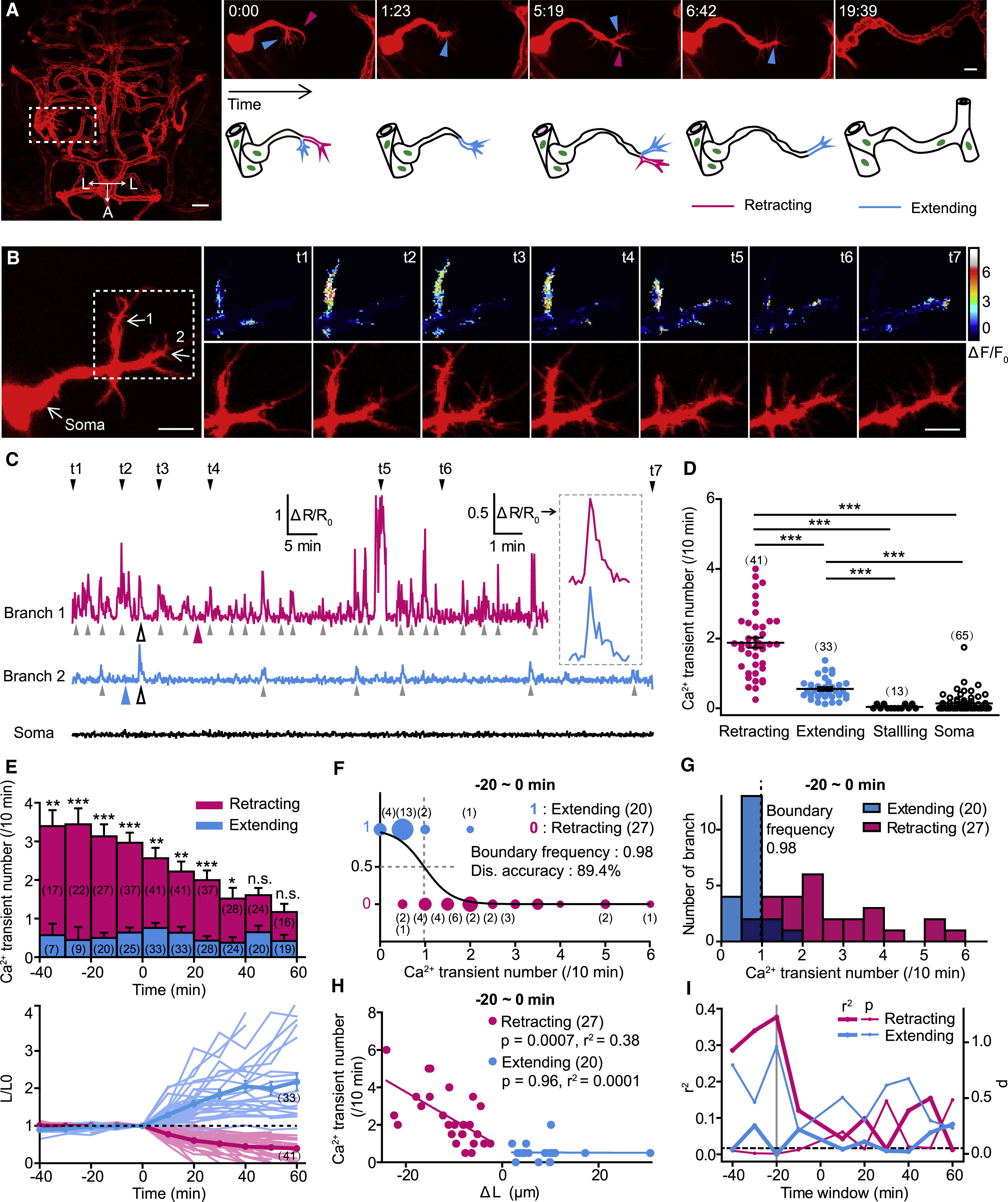Fig. 1 Frequencies of Local Ca2+ Transients at Primary Branches of Endothelial Tip Cells Are Correlated with the Fates of Branch Retraction and Extension (A) Example showing the pathfinding of endothelial tip cells (ETCs) during brain vascular development of zebrafish. Left: projection image of the brain vasculature is shown; right: the pathfinding process for the ETC outlined in the left image is shown. A, anterior; L, lateral. (B) Representative images showing simultaneous calcium and morphology imaging of an ETC with two primary branches. Left and right bottom: mCherry signal is shown; right top: color-coded GCaMP5 signal is shown. (C) Traces of Ca2+ activities of the two branches and soma of the ETC shown in (B). Inset: enlarged Ca2+ transients from left traces (open arrowheads) are shown. Color arrowhead, time point when branch retraction or extension happened; gray arrowhead, Ca2+ transient. (D) Summary of the mean number of Ca2+ transients at the retracting, extending, and stalling branches or soma of ETCs. (E) Time course of the mean Ca2+ transient number (top) and relative length (L/L0, bottom) of retracting and extending ETC branches. The length of the branch measured at the time zero is defined as L0. The light lines represent individual cases, and the heavy lines indicate the average. (F) Logistic regression analysis of the relationship between the frequency of local Ca2+ transients and the fate of ETC branches. The size of the color dots is proportional to the number of events occurred. Dis., discrimination. (G) Distribution of the frequencies of Ca2+ transients at retracting or extending ETC branches. The dashed line indicates the boundary frequency of Ca2+ activities calculated in (F). Dark blue bars indicate the overlapped distribution. (H) Correlation between the frequency of local Ca2+ transients and the length change (?L) of ETC branches. (I) Summary of the correlation analysis for both the p and r2 at different time windows. The dashed horizontal line indicates the p value of 0.05. The gray vertical line indicates the data shown in (H). The numbers in the brackets indicate the numbers of ETC branches (D?H) or somata (D) examined. Scale bars, 30 ?m in left (A) and 10 ?m in right (A) and 10 ?m in left and right (B). n.s., no significance; ?p < 0.05; ??p < 0.01; ???p < 0.001 (two-tailed Mann-Whitney test for D; unpaired two-tailed Student?s t test for E). Mean ± SEM. See also Figures S1?S4.
Image
Figure Caption
Acknowledgments
This image is the copyrighted work of the attributed author or publisher, and
ZFIN has permission only to display this image to its users.
Additional permissions should be obtained from the applicable author or publisher of the image.
Full text @ Neuron

